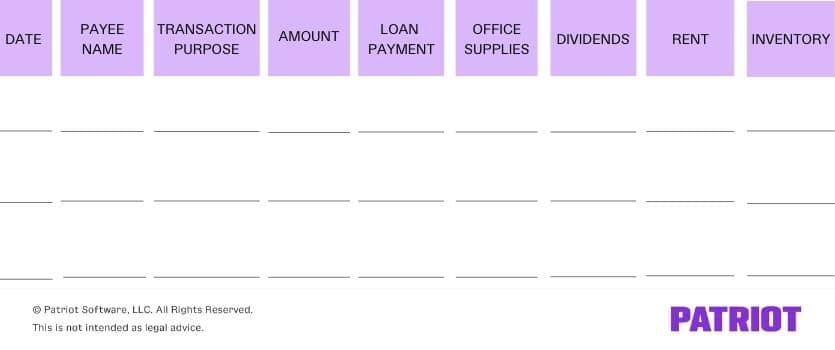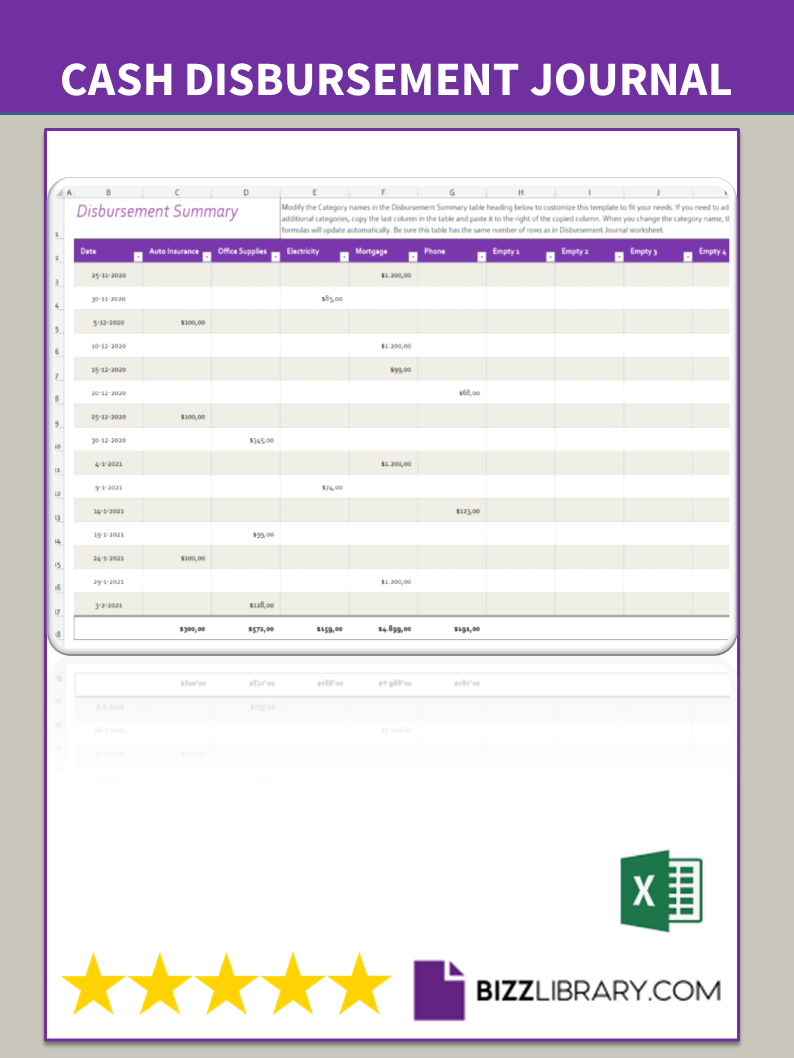
Once done, the screen will present a summary page containing the taxpayer’s information, business information, books of accounts details, and documents submitted (attachments). To better explain the Debits and Credits for this type of transaction, the entries below show how each account would be affected by a cash or account purchase. For purchases involving Non-VAT transactions, you cannot recognize VAT Input Tax. Smaller companies typically use cash disbursement journal example delayed cash disbursement to manage their cash flow and ensure they have sufficient funds to cover expenses. The controlled cash disbursement method is typically used by larger companies with significant cash reserves to manage their cash flows better and to invest their funds in other financial instruments. We record the payment to the Evergreen under the Accounts Payable because purchases on account might be something that is done regularly.
VAT-Registered Taxpayers
There is no need to make an entry to the petty cash account because it still shows a balance of $100. After that, you only need to retain an electronic copy of the books of accounts, subsidiary books, and other accounting records. Accounting records referred to above include invoices, receipts, vouchers, returns, and other documents supporting the entries in the books of accounts.
Petty Cash: Definition
On a regular (daily) basis, the line items in the cash disbursement journal are used to update the subsidiary ledgers. Normally most cash payments are to suppliers for credit purchases and the subsidiary ledger updated is the accounts payable ledger. In the above example, 550 is posted to the ledger account of supplier A, and 350 to supplier C. When posting to the accounts payable ledger, a reference to the relevant page of the journal would be included. The cash disbursement journal contains a variety of columns to record the cash outflows of the business.
Balance Sheet
It also helps in cash flow management and has access to real-time financial data. Bookkeepers and accounting systems record transactions in the cash disbursements journal before the transactions are posted to the general ledger, accounts payable ledger, and other ledgers. Keep in mind that cash disbursements are just one half of the coin. You must also record cash receipts when you collect money from your customers. A cash book is set up as a subsidiary to the general ledger in which all cash transactions made during an accounting period are recorded in chronological order.
What Is Cash Disbursement In Accounting?
- If the sum of the debit columns doesn’t equal the sum of the credit columns, you have a problem that you should track down right away.
- We follow strict ethical journalism practices, which includes presenting unbiased information and citing reliable, attributed resources.
- Your cash disbursement journal can provide an up-to-date snapshot of these cash payments during a specific time period (e.g., quarter or year).
- This ensures that one individual can be held responsible for all the cash in the fund.
- A cash disbursement will record any cash transfer, not just that of physical cash.
- All such information is provided solely for convenience purposes only and all users thereof should be guided accordingly.
This ensures that one individual can be held responsible for all the cash in the fund. Although it would be preferable if all disbursements were made by check and all receipts were deposited intact, most firms usually maintain a small amount of cash on hand for miscellaneous expenditures. You should prepare an Affidavit of Loss explaining the valid reason for losing your books of accounts. Depending upon the discretion of the BIR, you may receive a penalty for failing to preserve your books of accounts. The penalty amount is P1,000 but does not exceed P25,000 for the calendar year (SEC. 250 of the NIRC). Once you’ve downloaded the QR stamp, you must print and paste it on the first page of your loose-leaf or manual books of accounts.

To use a cash payment journal, businesses must first set up the journal in their accounting software. Once the journal is set up, businesses will enter each cash payment into the journal as it occurs. The journal can then be used to generate reports on spending and to track outgoing cash flow.
For example, suppose a business pays an amount exceeding the charges for a service and later gets a refund for the excess money paid. In that case, the refund is documented as a negative disbursement in the company’s accounting records. And when you have cash expenses, you should record them in a cash disbursement journal.
It can include the payments made to suppliers, interest payments to the bank, purchase of assets, distribution of salaries to employees, etc. The credit to the cash account represents cash paid to suppliers for the period, which decreases the asset of cash. If you’re not tracking cash payments, it’s hard to know how much you’re really spending and receiving through your business. In any given month, a custodian will make various disbursements from the petty cash fund. The greatest degree of internal control can be maintained when a petty cash fund under the control of one individual is established to handle these expenditures. A petty cash fund is established by transferring a specified amount of cash from the general checking account to a person who is given custodial responsibility for the fund.
For example, suppose a business pays a supplier cash of 380 in respect of a purchase invoice of 400 less 5% cash discount. The line item posting to the accounts payable ledger would be for 400 to clear the supplier account. Finally the discounts received column total of 20 (in this case assume there is only one item for the accounting period) is posted to the general ledger discounts received account. Generally maintained by accounting software, these journals contain essential information such as the disbursement amount, check number, transaction type, payee, payer, and memo.
As the business is using subsidiary ledger control accounts in the general ledger, the postings are part of the double entry bookkeeping system. The cash disbursement journal (also known as the cash payments journal) is a special journal that is used by a business to manage all cash outflows. In other words, a cash disbursement journal is used to record any transaction that includes a credit to cash. All cash inflows are recorded in another journal known as the cash receipts journal.
For the purpose of tracking the company’s financial outflows, the cash disbursement log has a number of columns. When a business makes cash transactions, the bookkeeper or accounting software can record them in a Cash Disbursement Journal. This journal is a specialized journal to record all cash outflows of the business. Note that any cash inflows are recorded in the Cash Receipts Journal. By itemizing all cash payments, the Cash Disbursement Journal helps businesses organize and manage their outgoing cash records.

